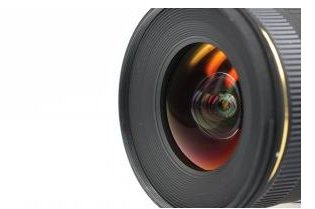Filming With an HD DSLR: Documentary Production With HD Ready DSLR Cameras
DSLR Revolution
For years it seemed as though the high end HD formats that you wanted to use would only come from large scale, expensive cameras. None of these could mimic the depth of field and look of film cameras, unless they cost tens of thousands of dollars. For low budget filmmaking, as is often the case for independent documentary production, you are going to need a lightweight and relatively inexpensive camera that can handle your needs and provide a high quality broadcast image.
In the last few years there has been a major revolution in the form of the DSLR camera: digital SLR cameras that are capable of high-end HD video. The Canon EOS 5D Mark II started this off with beautiful image quality, and other cameras have been able to bring in high bit rates and stylized motion pictures like Panasonic’s Lumix GH2. The rules for filming with an HD DSLR is somewhat different than the way people use more conventional HD cameras. This affects documentary filmmaking even more so because of how free flowing and spontaneous it is. Here are a few tips for using these DSLR cameras when in documentary production.
Non-Sync Sound
The major difference with shooting HD video with a DSLR camera is that it cannot record audio with any sort of professional quality. Non-sync sound, which is sound that is not synchronized to the video, was the standard for documentary production during the days of film. This was because you had to record to an exterior audio recording device, such as a DAT recorder, since the film could not record audio. Later it was matched together during the editing process and all of this added a lot more time to the process. Syncing audio and video takes quite a while and requires that there is a sound person.
All of this is fine for narrative production since you will be working with a sound mixer and have limited movement anyway but, on documentary production, it can be difficult filming with an HD DSLR for this very reason. If you are considering it, you need to understand these limitations ahead of time. The image quality may be stellar but, if it limits your ability to capture things as they are happening in your documentary production, you may need to go with a more traditional HD format cameras.
If you do decide to continue using HD video with a DSLR camera then you will want to make sure that you coordinate your sound mixer and director of photography to make sure they have the ability to move fluidly as a pair. This will take some practice, but you will also want to make sure that direct cinema scenes that you are going for are well planned ahead of time.
Focus
Each HD DSLR camera is going to work differently but many of them are chosen for their depth of field. Some of them, especially the Canon

EOS 5D Mark II, have issues when getting things into fine focus. You will notice that often times the subjects go in and out of focus when they are being filmed but this is not necessarily a problem with the camera. Instead, it remains more difficult for the average user to keep the main subject in focus. This can actually lead to situations where, even when they remain in acceptable sharpness, you will see the area immediately around them as soft.
This problem comes with filming with an HD DSLR camera specifically and is similar to the issue with non-sync sound: it is a problem that you have to decide whether or not you will be willing to deal with. This is also not as much as an issue with narrative films, which are much more planned. The solution to this is going to be in the planning, the knowledge the director of photography has about using a DSLR for HD video, and even bringing in an assistant camera person. It is not very common to have an assistant camera person on a small documentary project, but it will be in your favor to have one that assists with pulling focus and taking measurements.
Storage Space
Documentary film does not fit into the conventional shooting ratio format that regular narrative film does. Even the most well planned documentary film will shoot much more footage than will ever be used, which means that you are going to be filling up your storage spaces. In the days of mini DV tapes, this meant you could stock up on inexpensive tapes and run through them, logging and capturing later. The digital formats used by HD video were much more high quality and saved you money in the meantime, but were often much more expensive to purchase and ended up giving you a limitation as to how much you could shoot. On most HD cameras there ended up being a couple hours of storage space but, when filming with an HD DSLR, you have much less space than that on the compact flash card you will be using.
What you need to do when using a DSLR for documentary production is make sure you have a laptop and external hard drive with you at all times. This allows you to cycle out CF cards, dumping the footage onto your hard drive, so you can clear it out and re-use it. This is also going to put the assistant camera person to good use while in the middle of a filming situation.
References
Source: author’s own experience.
Image credits:
